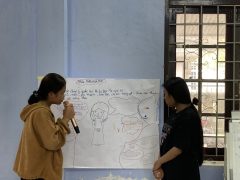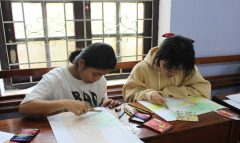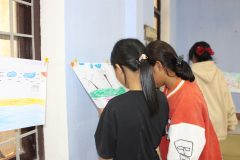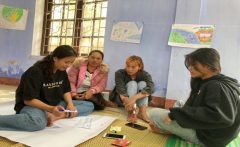ENGAGE conducted its second fieldwork in A Luoi, Thua Thien Hue, Vietnam, from 11-13 February 2023.
The following are the specific objectives of the three-day fieldwork:
[1] Conduct data analysis activities involving the participation of women and girls with disabilities.
[2] Provide opportunities for participants to build knowledge on disabilities, leadership, and the role of girls with disabilities from their perspectives and lived experiences.
[3] Gathering knowledge from the community’s stakeholders’ cultural, historical, and traditional context.
Fieldwork included the following activities:
– Reflecting on Cellphim: Women and girls with disability shared their views on stories created from the Cellphim method in the first fieldwork.
– An art activity on the theme of “Imagining Disability”. Participants used artistic drawings/symbols to imagine what disability is.
– A leadership model building: The participants were exercised from their perspectives within the community. Through group discussions, members identified critical issues that needed to be addressed; Identified members/groups/organizations involved in solving the issue and described the specific roles of members (including disabled women and girls) in resolving the issue (through images/diagrams/language).
– Discussing the roles of girls with disabilities in the community and voting for members to join the young leadership group. By identifying the qualities and skills needed for leadership, participants had the opportunity to understand themselves and other members of the group. They could then nominate and elect capable representatives to speak for the group.
– Interview a key informant regarding indigenous knowledge and the community leadership model.
Through activities, we achieved some significant outcomes:
- The participants participated in the data analysis process.
- Participants began to change their views of disabilities. They see themselves connected to disabilities.
- Girls with disabilities were more open in expressing their opinions, and young disabled women demonstrated their ability to coordinate the group.
- Participants shared an initial understanding of leadership and identified a leader’s qualities during the discussions.
- Three women and girls were voted as representatives for participants to join the Youth leadership circle event.
- Overviews of indigenous knowledge, community leaders’ roles, and perspectives on the leadership abilities of women and girls with disabilities within the local context are provided by the key informants.

Picture 1: Present the group discussion findings on leadership model building.

Picture 2: Creative activity “Imagining Disability.”

Picture 3: Exhibition “Imagining Disability”

Picture 4: A group discussion on leadership model building